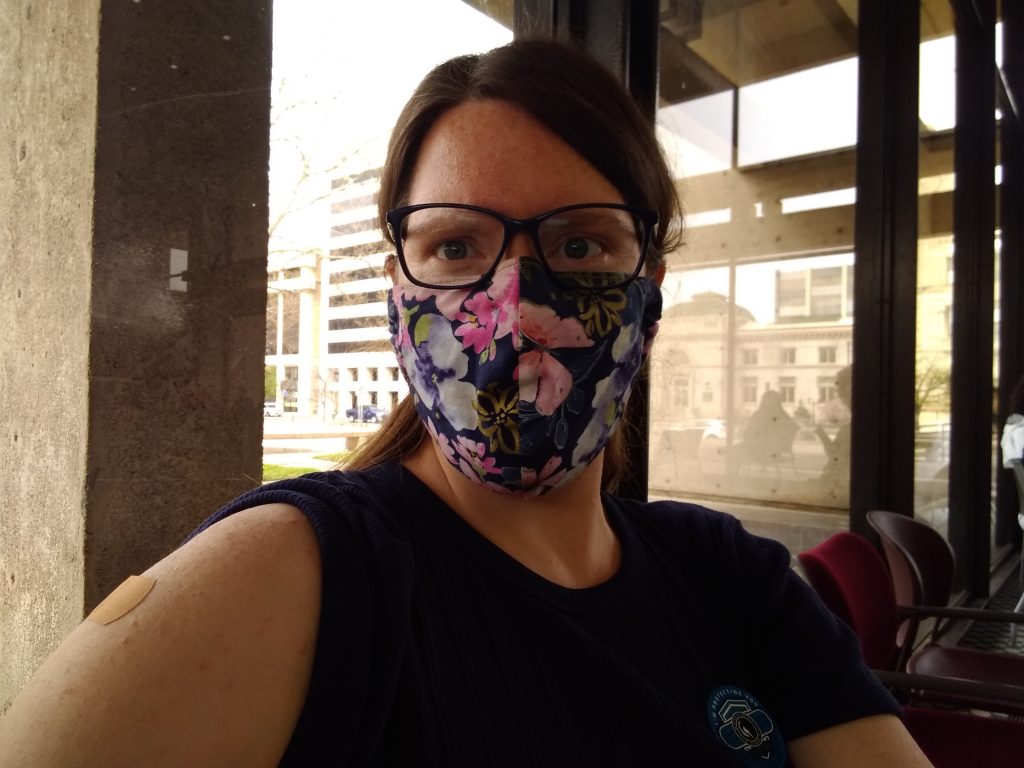Last year, recognizing that while we were at low risk for death or serious illness from COVID-19 you might not be, our family masked up, socially distanced, and got our vaccines.
My children have masked every time they’ve been in public since the CDC started recommending it (which means Daniel and I have also masked whenever our children have been in public, even during the brief period that CDC dropped the recommendation for masking for vaccinated individuals). My children missed a year of Sunday school (their primary interaction with other children) so their mother could continue to teach Sunday school without putting others at risk.
We did this not because we are particularly vulnerable to COVID but because the grandparents of my Sunday school students, the person who stands behind me at the grocery store, and the fellow taking my money at the McDonald’s drive-through might be.
This year, though, as Delta ramps up, filling our local hospitals once again and as lowered mitigation practices have started “respiratory season” months early (really months late since we basically skipped it last fall and winter), I feel particularly vulnerable.
Because this year, my family is at risk.
While preeclampsia is the immediate concern for me and baby, preeclampsia isn’t the only thing going on. I have complete placenta previa, which means that baby’s placenta completely covers my cervix. If my cervix starts to dilate and the placenta begins to detach early, baby could die. I could bleed out. It’s not a pretty possibility. This is why we’ll be delivering early, via c-section, no matter what happens with the preeclampsia.
But even if there’s no cervical dilation, no placental detatchment prior to our c-section, we’re not out of the woods yet. We are grateful that ultrasounds show no evidence of accreta – abnormal embedding of the placenta into my uterus. But even without any ultrasound evidence, there is still a significant risk, given my history of two prior sections and the presence of complete previa, that the placenta won’t detach cleanly and I’ll need an emergency hysterectomy and lots of transfused blood.
This year, given placenta previa and the risk of accreta, it matters to my family that our hospital is adequately staffed and equipped to handle desperate situations. We might well be that desperate situation.
But say God graciously grants us reprieve from early labor, from accreta, from hemorrhage. We’re still having a preemie. No ifs, ands, or buts about it. This baby will be born before term. We’re going to try to get as close to term as safely possible, but “safely possible” is no later than 37 weeks, 5 days.
And, as we know from past experience, preemies are particularly susceptible to respiratory viruses. In fact, we were strongly encouraged to distance our preemies by keeping them away from all crowds (including grocery stores and church) and all other children until they were a year of age because of their risk for rehospitalization if infected by RSV (the “respiratory season” currently going on that we skipped last year is largely RSV).
But our baby won’t be able to stay away from all other children – he’s blessed with four big siblings. Instead, our children will likely have to spend a second year in a row isolated from other people – last year, to protect those others, this year to protect their baby brother or sister.
And should baby end up getting sick and ending up back in the hospital? It matters to our family that the hospital be adequately staffed and equipped to handle that situation.
Which means that this year, it matters to us personally that we as a society get COVID under control.
Maybe it doesn’t matter to you personally. You consider the risk to yourself to be fairly low. But if you get COVID and spread it and community levels stay high, my children face another year of isolation. If you get it and spread it and our hospitals stay full, I and our new baby may be unable to get the care we might need.
So please, even if you won’t do it for you, will you do it for us? Will you consider laying down some of your rights to help us? Get vaccinated if you haven’t already been. Wear a mask when you’re around other people, especially if you’re unvaccinated or your community has high levels of transmission. Choose not to go out at all if you’re sick.
Will you do it for us?



